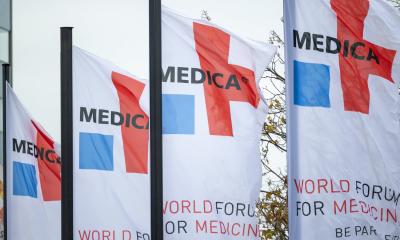Cost-effectiveness analysis in the ICU
By Johan Decruyenaere MD PhD, of Ghent University Hospital, Belgium
In most OECD countries, healthcare costs take 8-15% of GDP and, even more problematic, they are rising faster than the GDP growth rate.

Often, new therapies offer a minimal improvement in survival and quality of life but are extremely expensive. Therefore, governments and third-party payers are demanding improvements in efficiency and optimisation of the use of the limited resources.
ICU medicine in particular will not be immune for this pressure to deliver quality for an acceptable cost. Indeed, it is one of the most expensive medical disciplines. With only 10% of the hospital beds, ICUs consume over 25% of a hospital’s budget and, from a societal perspective, the total cost of ICU medicine is estimated between 0.5 to 1% of the GDP. Furthermore, the demand of ICU care is estimated to continue to grow more than 5% a year.
What is cost-effectiveness analysis ?
Cost-effectiveness analysis (CEA) is not a magic bullet; it is just one of the tools that can provide insight into the allocation of scare resources and the determination of the relative value of different alternatives. Instead of approaching cost-effectiveness analysis with trepidation, ICU physicians must play an active role and therefore be familiar with the basic concepts that underlie cost-effectiveness analysis.
CEA is a technique for comparing the relative value of various clinical strategies. In its most common form, a new intervention is compared with current practice in the calculation of the cost-effectiveness ratio:
The cost in the numerator is typically expressed in monetary values, whereas the denominator is expressed as number of quality-adjusted life years gained (QUALYs).
Table 1 delineates the various possibilities a new intervention may compare with the current practice and is called the cost-effectiveness plane. In this plane, an intervention is grouped into four quadrants (I to IV) based on its cost-effectiveness.
When a new intervention is both more effective and costs less (quadrant II), this intervention dominates the current practice, and should be adopted. Conversely, when the new intervention is less effective and more costly, it is dominated by the current practice. In quadrants I and III, CEA can attribute in the decision of choice between the alternative treatments.
Cost-effectiveness in the ICU
Several issues hamper CEAs in the critically ill and are discussed in detail in a report of the Second American Thoracic Society Workshop on Outcomes Research, published in the Am J Respir Crit Care Med (2002). One of them is that typical outcome in ICU studies is short-term mortality and that the preferred CEA long-term outcome data are not collected. However, the report provides solid guidelines to perform a standard approach of CEAs of ICU therapies. One prerequisite of a good CEA is the performance of a sensitivity analysis. The data used to determine a CEA come from different sources and are associated with different degrees of precision and uncertainty. Sensitivity analysis means varying the important input variables in the model and looking at what the effect is on the outcome of interest. A low effect means that the CEA model is robust and, of course, makes this CEA more valuable.
Observational studies suggest that the closed ICU model, which means reliance on-full time intensivist, is both more effective and cost saving. That would be an example of a CEA with a result in quadrant II, where there is no discussion to adopt the closed model. However, formal CEAs that include the costs of the change of organisation from an open to a closed model are lacking.
Sznajder et al (2001) investigated the cost-effectiveness of a cohort of over 200 patients in seven French hospitals. This study, with an excellent methodology, shows that the incremental cost-effectiveness ratio of ICU care was US$ 4100 per QUALY saved, which means that ICUs in general are very cost-effective. However, this is especially true for severe but rapidly reversible illnesses. Other results of specific ICU therapies are shown in table 2.
Conclusion
Without doubt, critical care medicine is expensive and intensivists will come under increased pressure to contain costs and provide evidence that ICU therapies are worth the attributed costs, considering the gain in lives and quality of life. Cost-effectiveness analyses are an important tool to assist in decision-making. International, accepted guidelines exist on how to conduct a cost-effectiveness analysis to assure that the results can really contribute to help allocate scarce ICU resources to the most optimal patient populations and offer them the most efficient therapies.
01.05.2006









